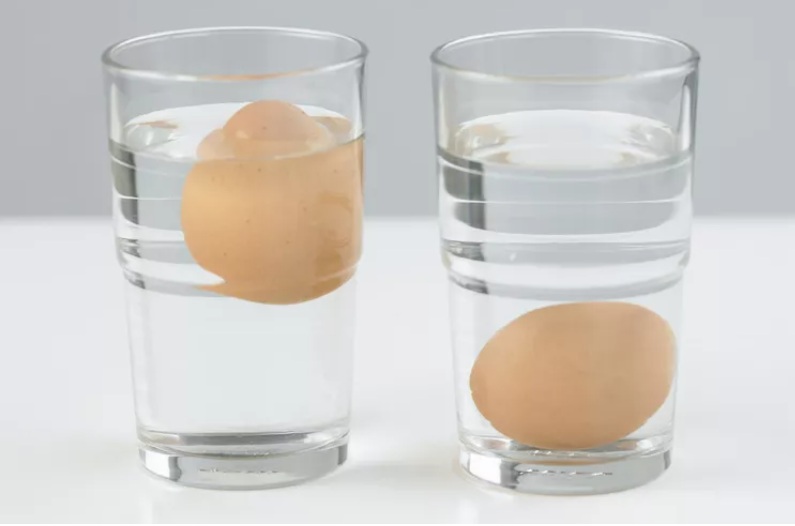A few simple tricks at home can help determine this in seconds.
Observe the egg's buoyancy.
Pour cold water into a large bowl or glass and drop the egg in. If the egg sinks to the bottom and lies flat, it's fresh. If the egg sinks but stands upright on the bottom, it's not as fresh but still usable. If the egg floats, it has spoiled and should not be eaten.
This is because eggshells are semi-permeable, allowing air to pass through. The longer an egg sits, the more air seeps in, creating air pockets that cause it to float. In addition, rotten eggs also release gas, contributing to their buoyancy.
 |
Illustrative photo: Howard Shooter |
Illustrative photo: Howard Shooter
Shake the egg.
Another way is to shake the egg close to your ear. While not as reliable as the water test, this method can be a helpful reference. If you hear liquid moving inside, the egg is old and the yolk may be runny, so check further before using. If there’s no sound, the egg is fresh.
Smell the egg.
Fresh eggs typically have no odor. If an egg has a characteristic sulfurous smell, it’s a clear sign that it has spoiled and needs to be discarded. The smell of a rotten egg is unmistakable.
However, Salmonella bacteria, a cause of food poisoning, has no easily detectable smell, color, or taste. Therefore, the US Centers for Disease Control and Prevention (CDC) recommends cooking eggs until both the white and yolk are firm.
Check the eggshell.
If the eggshell is cracked, has a slimy outer layer, or shows white powder, the egg may be contaminated with bacteria or mold.
However, if the egg cracked during transport but was fresh when purchased, it can be cracked into a clean container, sealed, and stored in the refrigerator for use within two days, as recommended by the US Department of Agriculture (USDA).
Crack the egg into a bowl.
Checking the color of the yolk and white can help determine if an egg is safe: If the white is green or iridescent, it may be spoiled due to Pseudomonas bacteria. If there are black or green spots, it could be a sign of fungal or bacterial contamination and should be discarded. If bright red blood spots appear, they don't affect health and the egg can be used normally.
Yolk color ranges from light yellow to deep orange depending on the hen's diet and does not reflect freshness. A greenish color in hard-boiled yolks is due to overcooking and does not affect quality.
Nhat Minh (according to Southernliving)












